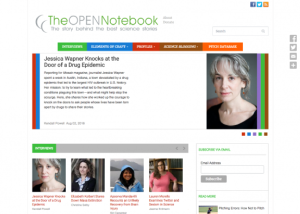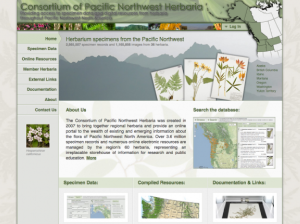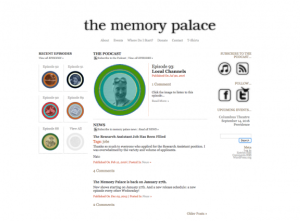Research and Education
Back to Top
|
 |
|
 |
|
The History Harvest
|
Social studies |
|
For the past several years, the University of Nebraska-Lincoln's Department of History, in partnership with a number of museums and organizations, has hosted a series of history harvests across the state. At each harvest, "community-members are invited to bring and share their letters, photographs, objects and stories, and participate in a conversation about the significance and meaning of their materials." Students and faculty then digitize, curate, and organize these materials into a series of collections and exhibits. The result is a collection of primary documents that reveal the diverse lives and experiences of multiple generations of Nebraska residents and comprise a great resource for any history classroom. Highlights from this digital project include a collection of letters and artifacts from Eugene Sengstake, who served as a pilot during World War II and was tragically killed in action in 1944; a collection about Nebraska's African-American Community; and a moving exhibit about refugee communities in Lincoln, Nebraska. [MMB] |
|





|
|
 |
|
NOVA Labs: Evolution
|
Science |
|
The team behind the popular PBS series NOVA, produced by WGBH in Boston, has created a collection of online Labs that provide interactive learning experiences relating to a number of scientific topics. (The Scout Report featured NOVA Labs in its 07-23-2013 report.) The most recent addition to the series is the Evolution Lab. In this engaging resource, learners can participate in two activities: Build a Tree and Deep Tree. In the Build a Tree activity, students create an evolutionary tree by reading about a variety of species and identifying the traits that connect them to one another. Meanwhile, Deep Tree is an interactive chart that demonstrates the connections between 70,000 species, from algae to bananas to human beings. Visitors can search for any species to learn about their classification and characteristics or to explore how any two species are related to each other. These two interactive activities are accompanied by an educator's guide, which includes lesson plans and worksheets for the classroom. In addition, this page includes Videos, an Evolution Quiz, and a Meet the Experts component. [MMB] |
|





|
|
 |
|
Palgrave Communications
|
Social studies |
|
Lovers of the humanities and social sciences will find much to appreciate with Palgrave Communications, an open access journal created by the international academic press, Palgrave MacMillan. The journal publishes original research across a variety of disciplines (including business), and welcomes interdisciplinary approaches. On this website, visitors can browse current and archived articles by subject. The site also contains Article Collections that highlight works by theme, including Shakespeare, Interdisciplinarity, Global Governance, and Gender Studies. As one can tell by these categories, the scope of Palgrave Communication is broad and inclusive. Recently published research includes an examination of the themes of "anxieties about fidelity, honesty and truthfulness in marriage," All's Well That Ends Well, an exploration of the role of science advisory boards in Canadian governance, and the history of therapeutic relaxation in Great Britain. [MMB] |
|





|
|
 |
|
For Better For Verse
|
Language Arts |
|
For Better for Verse is "an interactive online tutorial that can train you to scan traditionally metered English poetry." Created by the University of Virginia Department of English, this site allows visitors to learn the Rules of Thumb for scanning poetry, look up key terms related to the craft of scanning in the Glossary, and try their hand at scanning a number of poems by famous authors. To practice scanning, visitors can search for poems by author, type of poem (i.e. blank verse, couplet, etc.), or By Difficulty (from Warming Up to Special Challenge). The site includes poems by William Blake, Emily Dickinson, Robert Frost, and William Wordsworth, among a number of other renowned poets. Once visitors select a poem, they can work to identify the stress, feet, and meter of the poem. After scanning each line, users then check their work and revise their answers until they can correctly scan the line. Occasionally, a light bulb will appear next to a specific verse. By clicking on the light bulb, the scanner may learn additional "oddities or beauties of the line in question." For Better for Verse is a great tool for any poetry classroom or for anyone looking to better appreciate famous English-language poetry. [MMB] |
|





|
|
 |
|
Dissertation Reviews
|
Philosophy |
|
Doctoral dissertations include innovative scholarship, new topics of inquiry, and fresh approaches to longstanding topics in any academic discipline. However, most dissertations do not become available to the general public until the author is able to convert their dissertation into a book manuscript. Dissertation Reviews is designed to "offer readers a glimpse of each discipline's immediate present by focusing on the window of time between dissertation defense and first book publication." On this site, visitors can read reviews of over 1,000 dissertations in the humanities and social science fields from around the globe. In each review, an early career scholar in the field outlines the dissertator's main argument and sources and discusses how the dissertation fits into the field's existing body of scholarship. Visitors to this website can search for dissertation by institution or academic subject. In addition, Dissertation Reviews contains Fresh from the Archives, which reviews the many libraries, archives, and databases used by scholars to complete their dissertations. [MMB] |
|





|
|
 |
|
 |
|
Mathplanet
|
Mathematics |
|
If you are looking for a resource to help mathematics students complete homework assignments and learn outside of the classroom, you may want to check out Math Planet, an easily navigable online resource for mathematics students and instructors. Designed specifically for American high school students, the majority of Math Planet functions like an online textbook. Users can browse through subjects (Pre-Algebra, Algebra 1, Algebra 2, and Geometry) and select specific topics (e.g. linear equations, quadrilaterals, complex numbers) within these subjects. Each topic is accompanied by a written explanation of key concepts and a short Video Lesson that models how to do related math problems. In addition, Math Planet includes 60 ACT practice questions and 70 SAT practice questions. After attempting to solve these questions, visitors then learn the answers and may watch a video explanation. [MMB] |
|





|
|
























